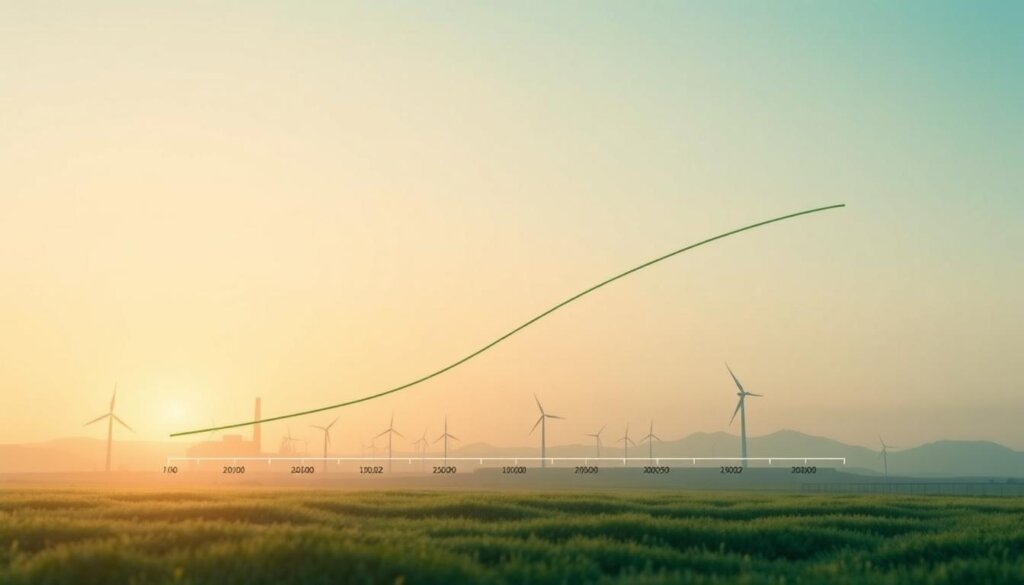Surprising fact: governments have pledged billions to cut supply costs — the U.S. announced $7 billion to build regional clean hydrogen hubs that aim to reshape global price trends.
The current price of this fuel reflects early market scale, energy inputs, and heavy infrastructure needs. Experts expect costs to fall with policy support, such as the DOE Earthshots program and public hubs that speed growth.
Infrastructure quality matters: high-grade valves and tube fittings reduce leaks and downtime, lowering total cost of ownership at stations.
Readers in Malaysia will find this post useful for comparing fuels and new technology paths. Wellness Group welcomes inquiries for local guidance; message WhatsApp +60123822655 during business hours: Mon–Fri 9:30 am–6:30 pm, Sat–Sun 10 am–5 pm.
Key Takeaways
- Public investment and programs aim to bring down long-term costs.
- Production, transport, and station hardware drive today’s price.
- High-quality components cut maintenance and improve uptime.
- Comparisons with mature fuels show why scale matters.
- Wellness Group in Malaysia can advise on local opportunities.
Why is hydrogen so expensive? Key cost drivers in production, distribution, and end use
High energy needs and local grid rules make production the largest driver of final supply costs.
Production economics: energy intensity, water needs, and electrolyzer costs
Producing green hydrogen requires more than 50 kWh of electricity and about 9 liters of water per kilogram. In many places, electricity makes up roughly 85% of total costs. That means lower electrolyzer prices help, but cheap power matters most.

Green vs. gray and blue pathways
Gray uses fossil fuels without capture; blue adds carbon-capture steps. Refiners and ammonia plants often produce on-site, which complicates switching to low-emission options. Policy rules in the united states about additional renewable power raise project complexity and can add cost.
Malaysia context: renewables, grid realities, and water
Local solar and wind potential helps, but tariffs, connection charges, and reliability steer site selection. Water sourcing and treatment add planning costs. Wellness Group can map site-level economics and budget ranges; message WhatsApp +60123822655 for guidance during Mon–Fri 9:30 am–6:30 pm and weekends 10 am–5 pm.
From plant to customer: why moving hydrogen adds to the price
Moving fuel from production sites to customers adds layers of equipment, permits, and energy that raise delivered costs. Logistics choices shape whether a project pays high upfront capital or steady operating bills.
Distribution pathways compared
Liquefaction and trucking work for small batches but suffer low energy density and boil-off losses. That adds specialist tanks, cooling, and tight operations, which increase per‑unit costs before the product reaches a station.
Pipelines cut unit costs when volumes are steady. Yet existing gas networks limit blends to about 20% and can leak. Building dedicated lines needs major investment and time for permitting and land access.
Converting to ammonia enables long shipping corridors, but it takes a heavy energy toll—roughly an 80% penalty across conversion and reconversion. Burning ammonia also risks nitrous oxide byproducts.
End use and competitiveness
For light vehicles and many trucks, electrification often wins on efficiency and price. Hydrogen finds better fit in refining, steel and other hard‑to‑electrify industries, or where long‑duration storage links to wind or solar farms.
Practical note for Malaysia: routing around dense urban areas, siting near industrial clusters, and choosing high‑integrity valves and components cut leaks and downtime. Wellness Group can outline routing, storage, and safety plans—message WhatsApp +60123822655 for a scoping discussion.
The future cost curve: subsidies, scale, and infrastructure shaping hydrogen’s price
Public funding and market design will push unit costs lower as networks and factories scale up. Targeted subsidies can close the gap between current delivered price and long‑run targets while standards steer design choices.

Policy signals and subsidies
Subsidies and clean energy rules change project math. Grants and tax credits lower upfront risks, but compliance often requires verifiable renewable supply and extra metering.
Scale effects and components
As projects add capacity, capital spreads across more units and procurement gains leverage. High‑integrity components—valves and tube fittings—cut leaks and maintenance.
Building refueling hubs and retrofitting stations
Retrofitting existing petrol sites reduces capex versus greenfield builds. Better components raise uptime and lower total cost of ownership over the asset life.
Global timelines and regional examples
The united states has anchored growth with a $7 billion hub program that creates demand and shortens learning curves. Malaysia can follow with clustered industrial offtakers and staged capacity adds.
| Driver | Near-term impact | Medium-term effect | Notes for Malaysia |
|---|---|---|---|
| Subsidies & standards | Lower CAPEX risk | Faster rollout | Designs must meet verification terms |
| Scale & procurement | Lower unit costs | Better vendor pricing | Clustered demand helps logistics |
| Components & reliability | Fewer failures | Lower lifecycle costs | Spec high‑integrity valves, tube fittings |
| Supply mix | Grid exposure | Stable prices with renewables | Site near solar/wind to cut tariffs |
- Practical: fleets with depot fueling may reach parity earlier.
- Planning: Wellness Group helps stage CAPEX, set component specs, and map uptime strategies.
- Contact: message WhatsApp +60123822655 (Mon–Fri 9:30 am–6:30 pm; Sat–Sun 10 am–5 pm).
Conclusion
The cost picture reflects large energy inputs at production, transport losses, and early-stage infrastructure. Green hydrogen requires >50 kWh and about 9 liters of water per kilogram, so electricity often makes up most of the total.
Distribution adds boil-off, trucking and pipeline limits, and conversion losses near 80% for ammonia routes. High-integrity valves and tube fittings cut leaks, lower maintenance, and improve uptime.
For Malaysia: start with depot or industrial cluster pilots where supply, demand and logistics align. Wellness Group offers site reviews, cost ranges, and component selection advice.
Contact WhatsApp +60123822655 (Mon–Fri 9:30 am–6:30 pm; Sat–Sun 10 am–5 pm).
FAQ
Why does production drive high hydrogen prices?
Production requires a lot of energy and often pure water, and electrolyzers and reformers cost a great deal up front. When electricity comes from fossil fuels or the grid, fuel and carbon costs push the price higher. Newer electrolyzers from Siemens Energy, Nel Hydrogen, and ITM Power lower per-unit costs over time, but capital recovery and maintenance remain significant contributors to price.
How do green, gray, and blue types affect cost differences?
Green hydrogen uses renewable electricity and has higher up-front electricity costs today, while gray uses natural gas with lower immediate production costs but higher emissions. Blue adds carbon-capture systems that increase capital and operating expenses. Carbon pricing and incentives from governments, like the U.S. IRA or EU green policies, change competitiveness between types by altering operating economics.
What local factors in Malaysia change the price picture?
Malaysia’s cost mix depends on renewable resource availability, grid reliability, and water access. Regions with strong solar or offshore wind can produce cheaper green hydrogen, but grid curtailment, transmission charges, and water treatment add expense. Local labor, permitting timelines, and import duties on specialized equipment also influence project budgets.
Why does transporting fuel add so much to the final cost?
Hydrogen is low density and demands special handling. Options like liquefaction, high-pressure tube trailers, dedicated pipelines, or converting to ammonia each require energy-intensive steps, expensive materials, and safety systems. Those steps add both capital and per-kilogram transport costs that show up at the pump or plant gate.
When does hydrogen compete with direct electrification?
Hydrogen is strongest where batteries or direct electrification struggle—long-haul heavy transport, certain industrial heat processes, and ammonia or steel production. For passenger cars and short-haul delivery, battery electric solutions often win on lifetime cost and infrastructure simplicity, making hydrogen less competitive in those sectors.
How do subsidies and policy change the price outlook?
Grants, tax credits, and production supports reduce perceived risk and lower effective cost for producers and users. Policy instruments like clean fuel standards or the U.S. Section 45V tax credits for clean hydrogen make projects bankable and speed scale-up. Predictable regulatory signals push down financing costs and encourage manufacturing of key equipment.
What role does scale and component supply play in lowering costs?
As manufacturing of electrolyzers, compressors, valves, and fittings expands, unit prices fall. Mass production of components from companies such as Baker Hughes and Air Products plus standardization improves reliability and reduces maintenance. Larger project volumes also spread fixed costs over more product, improving economics.
Why are refueling hubs and stations expensive to build and run?
Stations need high-pressure storage, compression, safety systems, and reliable uptime to serve fleets. Capex for site upgrades and permitting, plus ongoing maintenance and hydrogen losses, raise total cost of ownership. Public-private partnerships and shared hub models can reduce per-user expenses over time.
What lessons do United States hubs offer for regional development?
U.S. hydrogen hubs show that coordinated infrastructure, government funding, and clustered demand attract investment. They reveal practical timelines, supply-chain bottlenecks, and the value of linking industrial users, transport corridors, and renewable generation to cut delivered costs. Malaysia can adapt those models to local resource strengths.
How fast can prices fall and what drives that decline?
Prices can fall substantially over a decade if policy supports deployment, electrolyzer manufacturing scales, and renewable power costs keep dropping. Key drivers include cheaper capital, improved stack durability, streamlined permitting, and stronger supply chains for rare materials and balance-of-plant hardware.






